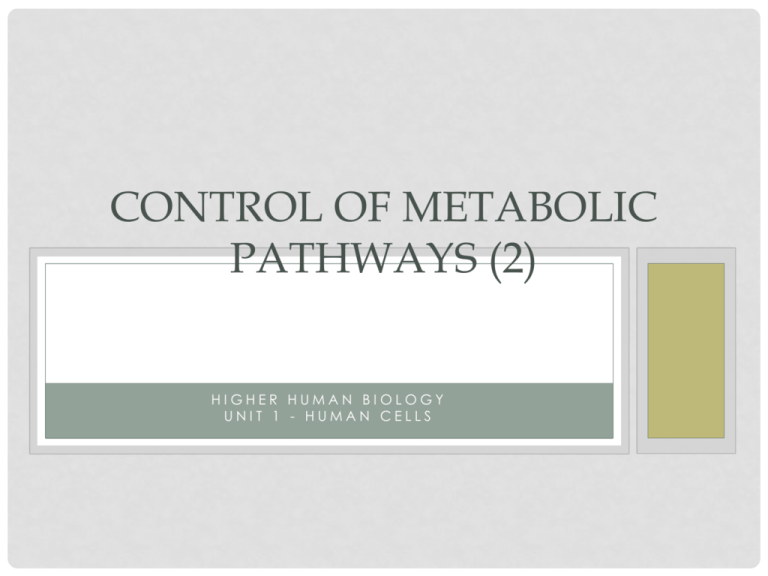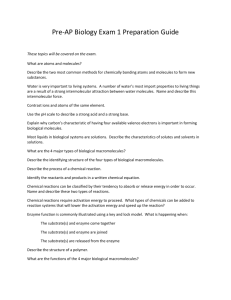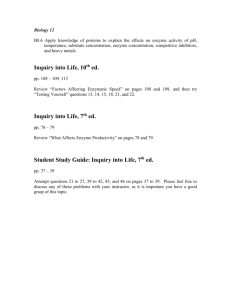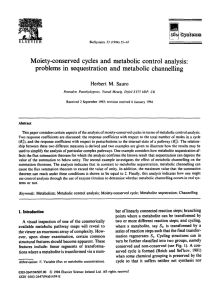Control of Metabolic Pathways (2)
advertisement

CONTROL OF METABOLIC PATHWAYS (2) HIGHER HUMAN BIOLOGY UNIT 1 - HUMAN CELLS CONTROL BY REGULATION OF ENZYME ACTION • Some metabolic pathways are required to operate continuously • Their genes that code for their enzymes need to be switched on continuously • These metabolic pathways are controlled by regulating the action of their enzymes SIGNAL MOLECULES • Some enzyme activity is controlled by signal molecules • E.g. Epinephrine (Adrenaline) • Triggers liver cells to activate an enzyme that converts glycogen to glucose. • Intracellular - molecules that originate in the cell itself • Extracellular - molecules that originate from the cells environment EFFECT OF INHIBITORS • Inhibitors decrease the rate of an enzymecontrolled reaction • There are 2 types • Competitive inhibitors • Non-competitive inhibitors COMPETITIVE INHIBITOR • These compete with molecules of substrate for the active sites on an enzyme • Molecular structure similar to the substrate • Rate of reaction is reduced COMPETITIVE INHIBITION EFFECT OF INCREASING SUBSTRATE CONCENTRATION NON-COMPETITIVE INHIBITORS • Does not combine directly with an enzyme’s active site • Attaches to a non active (allosteric) site • Changes the shape of the enzyme • Active site becomes altered indirectly • Prevents it combining with the substrate ACTIVATORS AND INHIBITORS • Some enzyme molecules are composed of several subunits. • Several active sites • Several allosteric sites • These may be active or inactive FEEDBACK INHIBITION BY END PRODUCT • As the concentration of an end product builds up, some of it binds to an enzyme in the pathway. • This slows down the conversion of intermediate metabolites • Which in turn lowers the concentration of the product. • When the concentration of the product drops, fewer molecules of the enzyme are affected • More end product is produced and so on…….. • Negative feedback control • Prevents wasteful conversion and accumulation of intermediates and final products Metabolite W Enzyme 1 Metabolite X Enzyme 2 Metabolite Y Enzyme 3 Metabolite Z Some of end product (Z) binds to enzyme 1 and prevents conversion of W to X




